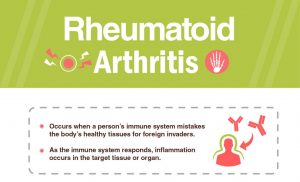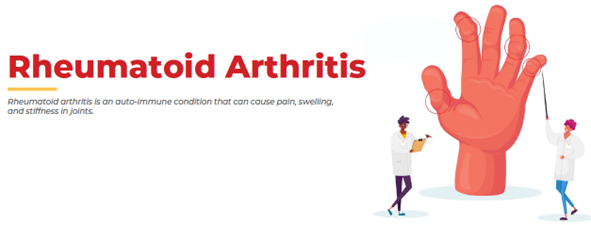Tips for Managing Arthritis and Joint Pain in Cold Weather

Cold weather can be challenging for those experiencing arthritis and joint pain. Many individuals report increased stiffness, discomfort, and reduced mobility as temperatures drop. While the exact connection between arthritis and cold weather is not fully understood, changes in barometric pressure, muscle stiffness due to the cold, and reduced physical activity are often cited as contributing factors.
However, there are practical strategies to help manage arthritis and joint pain in winters and maintain an active, pain-free lifestyle.
1. Stay Warm
Keeping the body warm is one of the simplest and most effective ways for joint pain relief in cold weather. When joints are exposed to freezing temperatures, stiffness and discomfort often worsen. Here’s how one can stay cosy:
- Dress in layers: Wear warm clothing, including thermal or woollen layers, gloves, scarves, and hats to protect from extremities.
- Keep the joints covered: Use knee pads, wrist warmers, or compression gloves to keep joints insulated.
- Use heating pads or hot water bottles: Apply localized heat to aching joints to help improve blood flow and reduce stiffness.
- Warm baths or showers: A warm bath can relax muscles and ease joint discomfort, relieving the overall body.
2. Keep Moving
Regular movement helps lubricate the joints and maintain flexibility. Here are a few ways to stay active:
- Gentle exercises: Low-impact activities such as cycling, swimming, and walking can help improve circulation and keep joints flexible without causing undue stress.
- Stretching routines: Incorporate daily stretches into the routine to maintain mobility. Focus on areas prone to stiffness, such as knees, hips, and shoulders.
- Indoor workouts: If it’s too cold outside, consider practising yoga, tai chi, or Pilates indoors. These exercises help with joint strength, balance, and flexibility.
- Break long periods of inactivity: Avoid sitting for extended periods. Get up and stretch every 30-60 minutes to keep joints limber.
3. Maintain a Healthy Diet
Diet plays a critical role in arthritis management and inflammation. Eating foods that help reduce inflammation can support joint health during cold weather:
- Omega-3 fatty acids: Include fish (mackerel, salmon, and sardines) in the diet. They are rich in omega-3s, which can help reduce joint inflammation.
- Antioxidant-rich foods: Incorporate fruits and vegetables like berries, spinach, and broccoli to combat inflammation.
- Turmeric and ginger: Both spices have natural anti-inflammatory properties. Add them to teas, soups, or meals.
- Stay hydrated: Proper hydration keeps joints lubricated and reduces stiffness.
4. Protect Joints
Extra care should be taken to avoid putting unnecessary stress on joints during cold weather:
- Use assistive devices: Tools like canes, braces, or ergonomic grips can reduce strain on affected joints.
- Modify daily activities: Be mindful when performing tasks that involve bending, lifting, or repetitive motions. Use proper posture and body mechanics to minimize joint stress.
- Warm up before activities: Always stretch and warm up muscles and joints before engaging in physical activity.
5. Use Heat and Cold Therapy
Alternating heat and cold therapy can help alleviate arthritis pain:
- Heat therapy: Applying heat can soothe stiff joints, improve blood flow, and reduce muscle tension. Use heating pads, warm towels, or hot baths.
- Cold therapy: Cold packs help numb sharp pain and reduce inflammation. Place ice packs inside a towel and apply them to the area for 10-15 minutes.
6. Maintain a Consistent Sleep Schedule
Ensuring good-quality sleep is one of the essential joint pain management tips. Lack of rest can amplify joint discomfort and fatigue:
- Establish a bedtime routine: Go to bed and wake up at the same time daily to regulate the sleep cycle.
- Create a comfortable environment: Use warm, supportive bedding and maintain a cosy room temperature.
- Manage stress: Stress can worsen arthritis symptoms, so include relaxation techniques (deep breathing and meditation) into the routine.
7. Visit a Healthcare Provider
If joint pain becomes unmanageable or worsens during cold weather, seek professional help. The doctor may adjust the treatment plan or recommend physical therapy. Regular check-ups ensure that arthritis is being managed effectively.
While cold weather can make arthritis and joint pain more noticeable, there are numerous tips for managing arthritis and staying active. Feel free to reach out for professional guidance if the pain persists or worsens. Book an arthritis test with Dr Lal PathLabs to monitor key health markers and ensure effective arthritis management throughout the winter months.
FAQs
1. How to stop arthritis pain in cold weather?
To reduce arthritis pain in cold weather, keep joints warm, exercise regularly, use heat therapy, eat an anti-inflammatory diet, and stay hydrated. Avoid inactivity for long periods.
2. What is the fastest way to treat arthritis?
Fast joint pain relief can be achieved through heat or cold therapy, over-the-counter pain relievers, gentle exercises, and topical treatments. Consult a healthcare provider for personalized advice.














